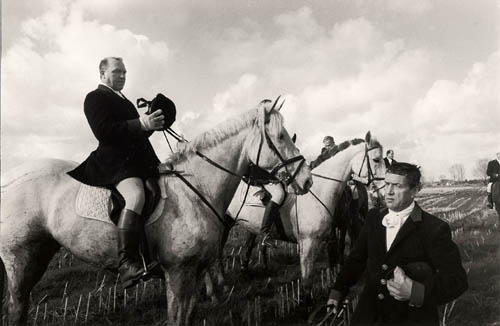Gina VAN HOOF
This post is also available in:
 French
French
Drag hunting is a simulation of fox hunting. During the winter season in Belgium, every Sunday morning, twenty to fifty horsemen follow a pack of hounds that follow a scent laid down before them. The trail is pre-established; it goes through two to three villages’ fields and woods. The stepper opens up the trail by dragging a ball of hay impregnated with hare urine. This is the trail that the hounds follow. The drag lasts about two hours, during which the horsemen clear natural and constructed obstacles. They spectators follow in their cars, and stop to watch them from the observation points. There is no stake, no competition: to gallop and jump freely with one’s horse through the land seems to be the pleasure sought for. Thus we speak of sportsmanship rather than a social class’s ritual, the nostalgia for the past when a certain social class could run freely over its grounds forgetting that today’s landscape is invaded by urbanisation, roads, and fencing. What motivates them? Being in harmony with their horse and nature, or affirming their belonging to a social class by means of a ritual?



